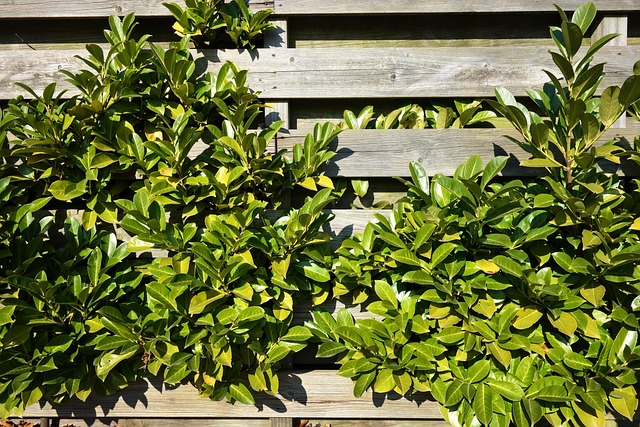Fences serve both functional and aesthetic purposes in our outdoor spaces, and proper care is essential to maintain their beauty. Fence staining and sealing are crucial processes that not only enhance the visual appeal of wooden fences but also protect them from the elements. This comprehensive guide delves into everything you need to know about fence staining, from understanding its benefits and choosing the right products to step-by-step application techniques for a professional finish, as well as maintenance tips for long-lasting results.
- Understanding Fence Staining: Benefits and Types
- Preparing Your Wooden Fence for Staining
- Choosing the Right Stain: Color Options & Applications
- Sealing for Protection: Types of Sealers & Application Techniques
- Step-by-Step Guide to Professional Fence Staining
- Maintenance Tips for Long-Lasting Fence Appearance
Understanding Fence Staining: Benefits and Types
Fence staining is an essential process that not only enhances the aesthetic appeal of your wooden fence but also provides numerous practical benefits. By applying a coat of stain, you create a protective barrier against the elements, including UV rays from the sun and moisture from rain or humidity. This barrier helps to prevent fading, cracking, and rot, which can weaken and damage the wood over time.
There are various types of fence stains available in the market, each offering unique features and advantages. Water-based stains are popular for their low odor and quick drying time, making them a preferred choice for environmentally conscious homeowners. Oil-based stains, on the other hand, provide deeper penetration and longer-lasting protection but may emit a stronger scent. Each type serves different purposes; while water-based stains offer excellent color retention, oil-based options excel in sealing and protecting the wood.
Preparing Your Wooden Fence for Staining
Before applying any stain or sealer, it’s crucial to prepare your wooden fence thoroughly. Start by cleaning the fence to remove dirt, dust, and debris using a pressure washer or a stiff-bristled brush. This step ensures that the stain adheres properly and evenly.
Next, sand any rough spots or splinters to create a smooth surface. Fill in cracks and holes with wood putty, then sand again until the fence is smooth and uniform. Removing loose debris and smoothing the surface helps the stain penetrate deeper into the wood, enhancing its durability and aesthetic appeal.
Choosing the Right Stain: Color Options & Applications
When choosing the right stain for your wooden fence, consider both aesthetic preferences and practical applications. A wide array of color options are available, from natural wood tones to vibrant hues, each serving different purposes. Lighter shades can enhance the natural beauty of the wood grain, while darker tones create a more dramatic effect or offer better concealment of existing stains and imperfections.
The application method is another key factor. Some stains are designed for spraying, ideal for quick, even coverage on large fences. Others come in a paint-like formula suitable for detailed work or corners that require precise brushing. Always read the product description to ensure the stain matches both your desired look and the fence’s surface characteristics.
Sealing for Protection: Types of Sealers & Application Techniques
Sealing a wooden fence is an essential step to protect your investment from the elements and prolong its lifespan. The primary function of a sealer is to create a protective barrier, shielding the wood from moisture, UV rays, and other environmental factors that can cause rot, warp, and discoloration. There are various types of sealers available, each offering unique benefits and application methods.
Common types include clear coatings, semi-transparent stains, and opaque stain-and-sealers. Clear coatings provide a high level of protection with minimal color change, while semi-transparent stains offer enhanced color coverage along with protection. Opaque stain-and-sealers not only protect but also add a desired color to the fence. Application techniques vary depending on the sealer type; some can be brushed or rolled on, while others require spraying or even dipping for maximum coverage. Following manufacturer instructions ensures optimal results and longevity of the protective barrier.
Step-by-Step Guide to Professional Fence Staining
Professional fence staining involves several precise steps to achieve a beautiful, long-lasting finish. Begin by cleaning your wooden fence thoroughly; remove any dirt, debris, or old stain with a pressure washer or brush. Next, sand the surface gently to create a rough texture that promotes better adhesion. This process also helps to fill in any gaps or cracks.
After sanding, ensure the wood is dry completely before proceeding. Apply a primer designed for outdoor use and allow it to set as per the manufacturer’s instructions. Then, using a high-quality brush or roller, evenly spread your chosen fence stain over the entire surface. Follow the product’s directions for the recommended number of coats, allowing each coat to dry thoroughly between applications. The final step is sealing; choose a water-based sealer suitable for wooden fences and apply it uniformly to protect the stain and enhance its durability.
Maintenance Tips for Long-Lasting Fence Appearance
Regular maintenance is key to preserving the vibrant appearance of your stained and sealed wooden fence. Start by cleaning the fence annually to remove any buildup of dirt, mold, or mildew. Use a soft-bristled brush and a mild detergent mixed with water; avoid harsh chemicals that could damage the finish. After cleaning, reapply a fresh coat of sealant every two years to protect against the elements and extend the life of your stain.
Inspect your fence for any damaged or peeling sections regularly. Repair or replace these areas promptly to prevent further deterioration. Keep an eye out for signs of rot, especially in older fences, as this can compromise structural integrity. Regular maintenance not only keeps your fence looking its best but also ensures it remains safe and secure for years to come.
